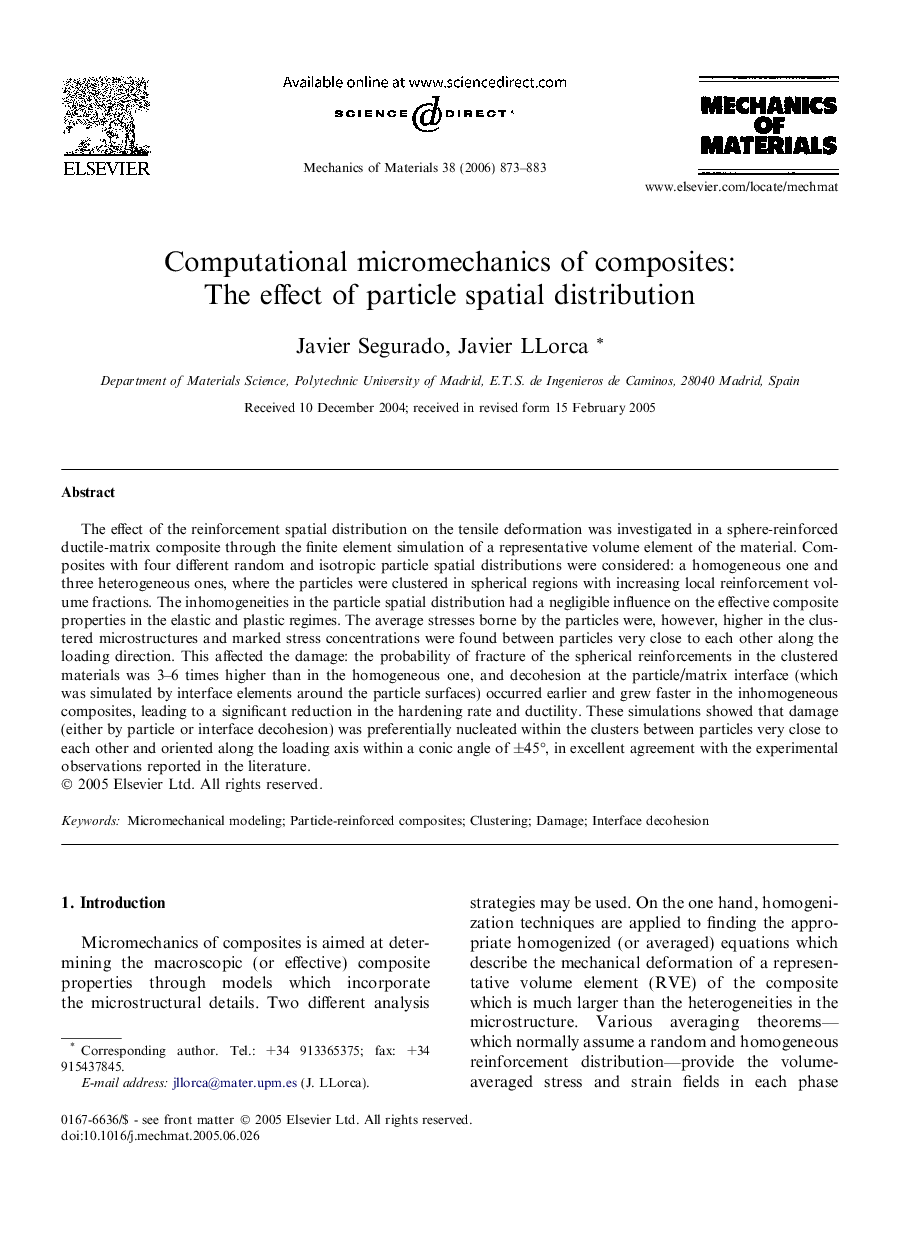| Article ID | Journal | Published Year | Pages | File Type |
|---|---|---|---|---|
| 800455 | Mechanics of Materials | 2006 | 11 Pages |
The effect of the reinforcement spatial distribution on the tensile deformation was investigated in a sphere-reinforced ductile-matrix composite through the finite element simulation of a representative volume element of the material. Composites with four different random and isotropic particle spatial distributions were considered: a homogeneous one and three heterogeneous ones, where the particles were clustered in spherical regions with increasing local reinforcement volume fractions. The inhomogeneities in the particle spatial distribution had a negligible influence on the effective composite properties in the elastic and plastic regimes. The average stresses borne by the particles were, however, higher in the clustered microstructures and marked stress concentrations were found between particles very close to each other along the loading direction. This affected the damage: the probability of fracture of the spherical reinforcements in the clustered materials was 3–6 times higher than in the homogeneous one, and decohesion at the particle/matrix interface (which was simulated by interface elements around the particle surfaces) occurred earlier and grew faster in the inhomogeneous composites, leading to a significant reduction in the hardening rate and ductility. These simulations showed that damage (either by particle or interface decohesion) was preferentially nucleated within the clusters between particles very close to each other and oriented along the loading axis within a conic angle of ±45°, in excellent agreement with the experimental observations reported in the literature.
